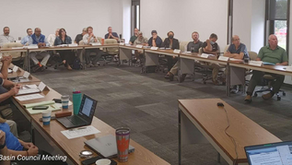Better Facilitation: 5 Pointers That Build Team Dynamics in Your Asset Management Program
- JD Solomon
- Mar 12, 2024
- 3 min read

Establishing common knowledge is an essential component of effective team dynamics. A knowledge transfer session is a great way to get everyone on the same page, whether before developing an asset management plan or two years into an implementation. These are a handful of key points to cover in those sessions.
#1 Use A Simple Analogy
It's always better to start with a system that the participants use. For example, in the water & wastewater sector, I usually use a typical wastewater pump station. I often use a typical conveyor system in the mining and food industries.
I prefer to use a house for broader audiences. Just about everyone can relate to balancing the needs of their roof, the heating and cooling system, and their major appliances.
I avoid the car. For some reason, asset managers have over-used this analogy.
#2 What’s An Asset?
Defining an asset plagues even the most mature asset management programs. Is the definition based on the asset's value? Or is it based on its criticality to the core mission? Or maybe an asset is defined by what we maintain, and things we simply replace are called parts.

The real-world answer is, "Yes, all of those things apply." And to make matters worse, the definition changes depending on who is in charge.
My advice is to face the dilemma head-on. My classic approach is asking participants how many assets they see on a picture of a standard water well used in agriculture and water supply. The normal range of responses is between 5 and 11 assets.
The answers stimulate conversation and understanding.
#3 We’re Not Going to Do All of That
The asset management “books” are full of stuff that only a few organizations can implement. That’s true whether it’s ISO 55000, the international asset management standard, the Institute of Asset Management (IAM) guidance, or some other source.
All the "books" tell you that what each organization does depends on its context. Asset management leaders and facilitators usually forget to tell their teams.
Nothing blows up team dynamics like trying to implement two dozen asset management initiatives when everyone is already struggling to do their normal jobs.
#4 Risk Matrices Are Used for Initial Prioritization
Risk matrices are two-by-two colored graphs with "likelihood of failure" and "consequence of failure" on each axis. Red is the color of choice for assets with high likelihood and consequences of failure. On the other extreme, green is the color of choice for assets we feel pretty good about.
We sometimes do questionable math and multiply the two factors to get a "risk score." Assets with higher numbers are riskier.
This approach is the gold standard for asset management. It also has many flaws.
In reality, a risk matrix is simply a place to start. The approach is great for organizations low on the asset management maturity curve or where there has been a lot of employee turnover. The approach does build a commonality of thought.
#5 Prioritization is Not Optimization
Building on #4, remind your team that we'll do our best to evaluate and prioritize. However, those who commit resources will make the final decision. Their decisions, like ours in the evaluation, are driven in many ways by judgment. Prioritization (and selection) is not optimization.
You Can Say A Lot More
There is a lot more that can be said and many different formats for knowledge transfer sessions. Just remember that these five topics can be discussed for hours (or days). At most, you will only have about two hours.
Building Team Dynamics in Your Asset Management Program
Establishing common knowledge is an essential component of effective team dynamics. A knowledge transfer session is a great way to get everyone on the same page, whether before developing an asset management plan or two years into an implementation. This brief article summarizes five key points that will improve your asset management program's team dynamics and make you better at guiding the process.
JD Solomon Inc. provides solutions for program development, asset management, and facilitation at the nexus of facilities, infrastructure, and the environment. Subscribe for monthly updates related to our firm.




Comments